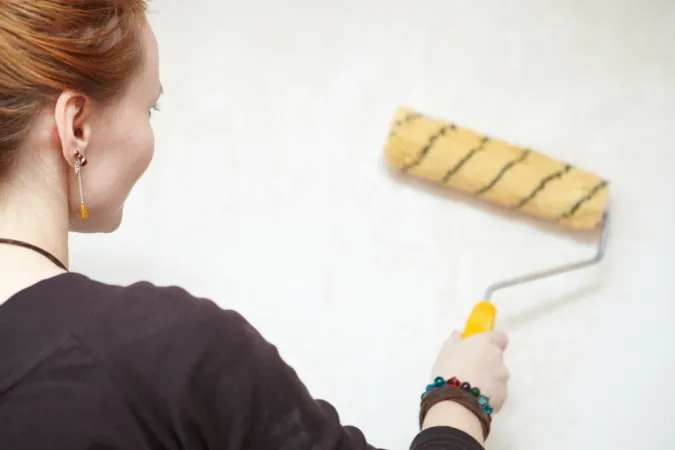Painting Your Space: Unveiling the Factors Affecting Painting Time
Transforming a room with a fresh coat of paint can be a refreshing and rewarding experience. But before diving into this project, one question invariably arises: how long will it take to paint a room? The answer, unfortunately, isn’t a simple one-size-fits-all. Several factors influence the timeframe, and understanding these variables will help you plan your project effectively.
The Essential Factors: Unveiling the Time Equation
-
Room Size: As logic dictates, larger rooms naturally require more time to paint compared to smaller spaces. Consider the square footage of your walls, ceiling (if painting it), and trim to estimate the total painting area.
-
Paint Choice: Different paint types have varying drying times. Latex paint, commonly used for walls, dries relatively quickly, while oil-based paints take longer. Additionally, applying multiple coats of paint will extend the overall drying and painting time.
-
Surface Condition: The condition of the walls significantly impacts painting time. Smooth, prepped walls with minimal imperfections will require less prep work and painting time compared to walls with cracks, holes, or uneven surfaces that necessitate repairs and sanding.
-
Number of Coats: For optimal coverage and a flawless finish, applying two coats of paint is generally recommended. However, heavily stained walls or dramatic color changes might require additional coats, extending the project timeline.
-
Painter’s Experience: A seasoned painter with efficient techniques will naturally complete the job more quickly than someone new to wielding a brush or roller. Factor in your own experience level or if you’re hiring professional painters.
-
Level of Detail: A simple paint job focuses solely on the walls. However, incorporating detailed elements like painting trim, moldings, or decorative features will add to the overall project time.
Example Calculation:
Let’s consider a hypothetical scenario to illustrate the impact of these factors. Imagine a 12ft x 10ft room (120 sq. ft. walls) with a standard 8ft ceiling (96 sq. ft.). If the walls are in good condition, you’re using latex paint with two coats, and you’re a DIY painter with basic experience, here’s a possible time breakdown:
- Prep Work (patching minor holes, covering furniture, masking trim): 2-3 hours
- Painting Walls (2 coats): Assuming 1 sq. ft. painted per minute with a roller, this translates to roughly 216 minutes (3.6 hours) per coat, totaling 7.2 hours for two coats.
- Cleanup: 1-2 hours
Total Estimated Painting Time: 10.2-12.2 hours
This is a simplified example, and the actual time might vary depending on the specific circumstances.
Beyond the Basics: Additional Considerations
-
Drying Time: Factor in drying time between coats. While latex paint dries relatively quickly (usually within a few hours), it’s crucial to allow for complete drying before applying the next coat to ensure proper adhesion and finish.
-
Furniture Removal and Protection: Moving furniture or properly covering it can be time-consuming but is essential to avoid paint splatter and protect your belongings.
-
Unexpected Delays: Be prepared for unforeseen circumstances that might extend the project, such as discovering hidden wall damage that requires repair.
The DIY Dilemma: Weighing Your Options
Painting a room can be a rewarding DIY project, allowing you to personalize your space and save on professional painting costs. However, it requires time, effort, and attention to detail. If you’re pressed for time, lack the necessary experience or equipment, or have a complex painting project involving extensive prep work or intricate details, hiring professional painters might be a better option.
Frequently Asked Questions (FAQ): Ensuring a Smooth Painting Experience
- How much paint do I need for my room?
A general rule of thumb is to estimate one gallon of paint per 400 square feet of wall space. However, factors like paint absorbency and the number of coats needed can influence the quantity. It’s wise to purchase slightly more paint than your initial calculation to account for potential spills or drips.
- What tools will I need for painting a room?
Essential tools include: drop cloths, painter’s tape, brushes, rollers (various nap sizes for different surfaces), putty knife (for patching holes), sanding paper, a sturdy ladder, and a paint tray.
- How can I achieve a clean finish line where the wall meets the ceiling or trim?
Using painter’s tape to create a crisp line is vital. Apply the tape firmly along the edges you want to remain unpainted, and carefully remove it after applying the paint and allowing it to dry completely.






More Stories
Is there a lifetime limit on epidural steroid injection?
What is Section 20 of the Motor Accident Insurance Act (Queensland)?
Where to Watch USMNT vs Jamaica National Football Team